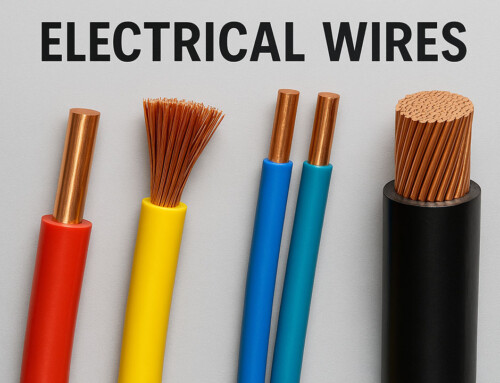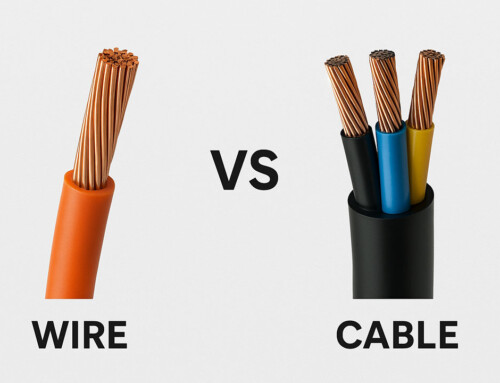Table of Contents
Have you ever found yourself in a situation where a power outage leaves you in the dark (literally) with no electricity? It’s frustrating, right? It’s natural to wish you had a backup plan to keep your lights on and appliances running! Well, fear not! This blog is about to dive into a hot topic – How to connect a generator to a house without a transfer switch.
Whether you are a seasoned pro or a newbie to the world of backup power, this is a must-know skill! It can come in handy during unexpected outages. So, grab a cup of coffee (or tea, no judgment here), and let’s explore this electrifying topic together!
What is a Transfer Switch?
When there is an outage, transfer switches, whether automated or manual, serve as a quick way to access electricity. An automatic transfer switch (ATS) is a handy small gadget that switches power from your primary source to a backup generator when there is a problem with the main power supply.
It maintains functioning smoothly on backup until regular utility power is restored. Without one, you’d have to manually connect your generator to whatever requires power. Not particularly efficient or effective!
What is the Role of the Transfer Switch in Connecting the Generator to House?
The ATS serves as a bridge between your primary and backup power sources. It is indeed like an electrical relay for your building or equipment. It may even function as a redundant rack-mounted power supply for equipment connected to a single wired source.
It essentially serves as a traffic policeman between your appliances and grid power, as opposed to generator electricity. It ensures there is no overlap and provides a simple method for keeping vital operations functioning when the lights go off.
Do you really need a transfer switch for generators? The answer may differ based on your circumstances and business kind. But altogether, it simply makes life simpler!
What are the Hazards of Not Using a Transfer Switch When Connecting to a Generator?
Connecting a generator without a transfer switch can result in significant consequences such as:
- Unsafe back feed
- Higher risk of electrical shock
- Probable equipment damage
- Violation of electrical regulations
- Restricted functioning
- Appliance damage
To summarize, the usage of a transfer switch is critical for generator safety and sound operation. It helps to prevent backfeed problems, protects your equipment from damage, and ensures compliance with electrical rules.
Are you still interested in learning about alternative methods to connect a generator to a house without a transfer switch? Read this blog post further!
How to Connect Generator to House Without Transfer Switch – 3 Safer Methods
Connecting a generator to your house without a transfer switch is possible. However, experts don’t recommend it due to potential dangers. When using a generator without a transfer switch, there’s a risk of back-feeding power into the grid, which can pose serious hazards for utility workers. However, here are some alternative methods you can consider:
-
Using Extension Cords
Although not a preferred method due to safety concerns and electrical hazards, if you choose this route:
- Use heavy-duty outdoor-rated extension cords matching your generator’s wattage.
- Keep the cord as short as possible and regularly inspect it for damage or wear.
- Never run the cord through openings that could cause damage.
-
Using Dedicated Outlet Boxes
This comparatively safer method involves installing an outdoor-rated power inlet box and an outlet box inside the house where appliances can be plugged in directly.
-
Using Interlock Device/Kit
An interlock kit prevents dangerous back-feed by allowing only one power source at any given time when connecting a portable generator without needing another transfer switch.
What are Some Safety Considerations When Connecting a Generator to Your Home Without a Transfer Switch?
So, you want to safely connect a generator to your home without using a transfer switch. Here are some pointers for doing it correctly:
- First, determine the amount of electricity required and purchase a generator capable of handling the load.
- It’s better to have an electrician install a generator breaker, an interlocking device, and an outside outlet for you.
- Never plug your generator into a conventional wall outlet. Use a generator extension cable instead.
- When starting the generator, remember to put on your safety gear!
- Remember only to switch on the breakers for devices that require generator power. Be careful not to overburden your system.
- Keep an eye on how much electricity your generator is drawing. Safety first!
Just a heads up, electrical work can be pretty risky. So, if you feel unsure about any part of the process, make sure to put safety first and reach out to a qualified electrician for help. It’s always better to play it safe when it comes to dealing with electricity!
FAQ’s
-
What is a transfer switch?
A transfer switch is basically a device that lets you switch your power source from the utility grid to a backup generator during a power outage. It makes sure that your home or business stays powered up when the lights go out.
-
Is it safe to connect a generator to my house without a transfer switch?
It is not safe to connect a generator to your residence without a transfer switch. This type of configuration creates significant safety issues, including electrocution, back-feeding utility lines (which can harm line workers), and overloading circuits. Only consider doing this in an emergency and after thoroughly understanding the possible hazards.
-
How safe is it to use extension cords to connect my generator?
Using extension cords to connect your generator at home might be useful, but proceed with caution. Look for a durable, weatherproof wire that can withstand more watts than your appliances require. Keep the cables away from heat and water, and don’t overload them. To ensure optimal safety, consult an electrician on the proper usage of extension cables.
-
Is there a safer alternative to extension cords?
So, instead of utilizing extension cables, a dedicated outlet box on its circuit, independent from your main panel, might be a much safer solution. Just bear in mind that having things set up appropriately and securely would need the assistance of a competent electrician who understands how to install and ground everything properly.
-
What safety precautions should I take when using a generator without a transfer switch?
When using a generator without a transfer switch, prioritize safety. Always switch off the main breaker before attaching the generator. Keep in mind that it should be put outside and away from any windows or doors to ensure optimum ventilation. Furthermore, only utilize it for critical equipment. Before refueling or turning down the generator, disconnect any appliances for enhanced safety. It is vital to keep these precautions in mind while utilizing a generator without a transfer switch!
-
Isn’t a transfer switch the best way to connect a generator?
Yes, a transfer switch is the best way to connect a generator to your house. It separates your home’s wiring from the power grid and prevents back feeding, adding an extra layer of protection. Additionally, the transfer switch provides automated switching for ease.






